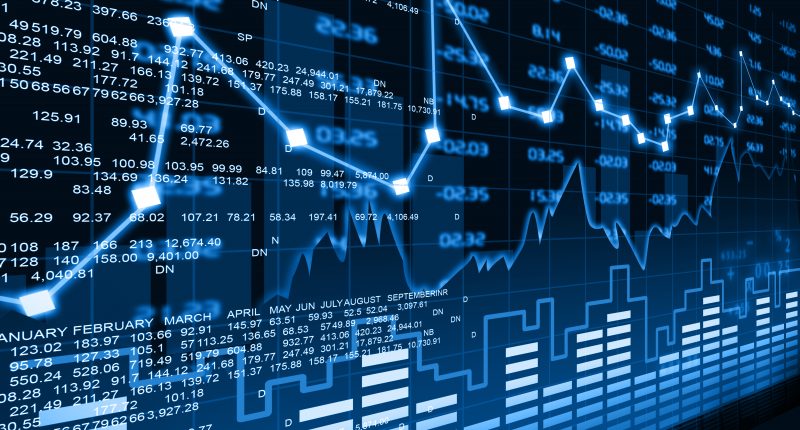Gains in key commodities helped cushion the outlook for Australian shares following a losing night on Wall Street after Federal Reserve calls for higher rates exacerbated recession fears.
The main indices in the US fell between 1.2 and 1.8 per cent amid signs the economy was cooling quickly. Early gains evaporated after two Fed officials said benchmark interest rates needed to rise above 5 per cent.
Pressure on ASX futures was capped by a positive night on commodity markets. Copper climbed to its highest since June. Iron ore rebounded. Gold touched a multi-month high before giving up its gains.
The S&P/ASX 200 will open 31 points or 0.42 per cent lower, according to futures action. The Australian benchmark inched up seven points or 0.1 per cent yesterday to an eight-and-a-half month closing high.
Wall Street
The January rally ran into selling pressure as economic data showed interest rates were slowing the economy. Evidence of cooling inflation was overshadowed by calls by Fed officials for further rate hikes.
The S&P 500 declined 62 points or 1.56 per cent to a second straight loss. The Dow Jones Industrial Average dropped 614 points or 1.81 per cent. The Nasdaq Composite fell 138 points or 1.24 per cent to its first loss in eight sessions.
The session started brightly after both retail sales and producer prices fell more than expected last month. Retail sales suffered their biggest decline of the year as they contracted for a second straight month. The 1.1 per cent slide was the largest since December 2021 and worse than forecast. The November sales slowdown was also revised higher.
Optimism about declining inflation was stoked by news producer prices dropped 0.5 per cent last month. The decline brought the annual rate of wholesale inflation down to 6.2 per cent from 7.3 per cent in November.
The fall was the largest since April 2020 and suggested inflation was easing rapidly from four-decade highs. The rising cost of production was a major input into soaring consumer prices last year.
Early stock gains evaporated as Fed officials doused hopes of a rates pause any time soon. St Louis Fed President James Bullard said the central bank should get official rates above 5 per cent “as quickly as we can”. Bullard said he was open to another half-point hike when the bank meets on February 1.
“Why not go to where we’re supposed to go?… Why stall?” he said.
Cleveland Fed President Loretta Mester said rates needed to go a “little bit” above 5-5.25 per cent to tame inflation. The current federal funds rate target is 4.25-4.5 per cent, implying up to four more quarter-point rate hikes.
The comments from Bullard and Mester place them at odds with market pricing. Market expectations are that rates will peak at 4.88 per cent by June. CME’s FedWatch tool places the odds on a quarter-point increase on February 1 at 93.3 per cent.
“Despite the producer prices numbers being okay today, it was just a harsh reminder that we’re a long way from a Fed pivot,” Dennis Dick, trader at Triple D Trading, told Reuters.
“This market is very hopeful that we’re going to get a soft landing and every time you have hawkish comments from the Fed, it feels you’re not going to get that.”
Australian outlook
Futures action implies a negative start to the session, with a rebound in the heavily-weighted miners providing some protection against US headwinds.
The S&P/ASX 200 has shown considerable resilience so far this week, holding its ground well in the face of growing signs of US weakness. Whether that continues will depend to a large extent on jobs data at 11.30 am AEDT and a production update from index heavyweight BHP.
The December employment report has the capacity to change the market mood for better or worse. Economists predict the jobless rate held steady at 3.4 per cent as the economy created around 26,500 jobs.
A negative surprise would relieve pressure on the Reserve Bank to raise benchmark rates by another quarter-point next month. Alternatively, an upside surprise such as November’s unexpectedly strong 64,000 increase would clear any doubts that rates are going higher.
BHP is due to release a quarterly update this morning. The Big Australian accounts for roughly 10 per cent of the ASX 200 by weighting, so its movements have a major impact on the index. A record high earlier in the week helped lift the local market to its strongest level since early May.
US sectors sank in unison overnight. Growth stocks fared slightly better than defensive or value sectors, but still logged solid declines. The technology sector shed 1.28 per cent.
BHP and Rio Tinto resisted the 1.38 per cent downtrend in materials (more below). Hardest hit were consumer staples -2.65 per cent, utilities -2.41 per cent, industrials -1.85 per cent and financials -1.84 per cent.
The dollar slid as investors revised their expectations for US interest rates. The Aussie skidded 0.72 per cent to 69.38 US cents.
Commodities
Iron ore prices rebounded despite another warning from China’s state planner about excessive speculation. The National Development and Reform Commission said it will increase supervision of spot and futures markets after previously warning against hoarding and price manipulation.
Ore prices rebounded after a meeting of the Commission on Tuesday ended without substantial announcements. Atilla Widnell, managing director of Navigate Commodities, said some traders took advantage of lower prices to “buy the dip”.
The most-traded May ore on China’s Dalian Commodity Exchange climbed 0.9 per cent in daytime trade to at 841.5 yuan (US$124.27) a tonne.
The rally helped BHP and Rio Tinto advance in overseas trade. BHP‘s US-traded depositary receipts bounced 0.46 per cent. The miner’s UK listing gained 1.04 per cent. Rio Tinto recouped 0.57 per cent in the US and 0.91 per cent in the UK.
Copper rose for a ninth straight session in the US, the longest run of daily gains since July 2020. On Comex, copper for March delivery firmed one cent or 0.3 per cent to US$4.2345 per pound.
In London trade, copper touched its highest level since June before surrendering most of its gains. Benchmark copper on the London Metal Exchange traded as high as US$9,481 before paring its advance to 0.02 per cent at US$9,288.50 a tonne.
Nickel jumped 6.02 per cent, zinc 2.3 per cent and tin 1.5 per cent. Aluminium eased 0.1 per cent. Lead shed 2.36 per cent.
Oil faded to its first loss in nine sessions in the US. West Texas Intermediate touched its highest since December before settling 70 US cents or 0.96 per cent lower at US$79.48 a barrel.
The international benchmark, Brent crude, settled 94 US cents or 1.1 per cent lower at US$84.98 a barrel.
Gold finished modestly lower after setting a nine-month high. Gold for February delivery settled US$2.90 or 0.2 per cent weaker at US$1,907 an ounce after trading as high as US$1.929.80. The NYSE Arca Gold Bugs Index eased 0.56 per cent.
The Global X Lithium & Battery Tech ETF dropped 0.19 per cent on the New York Stock Exchange to a third straight loss. The VanEck Rare Earth/Strategic Metals ETF fell 0.6 per cent, also its third loss.








